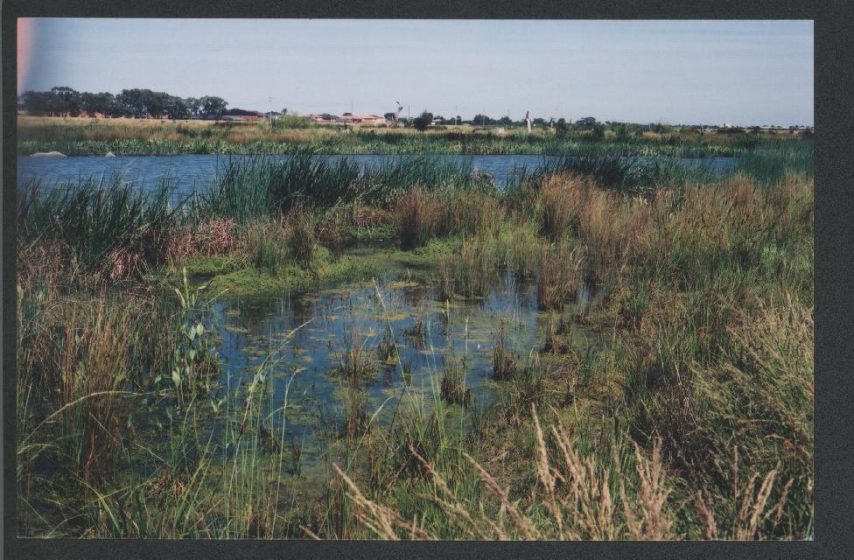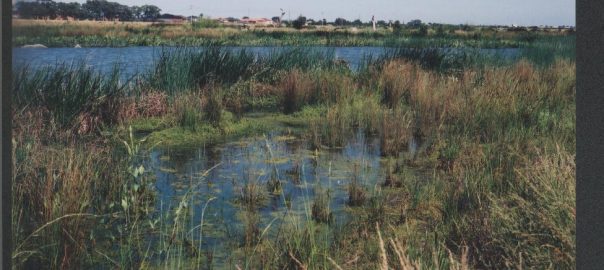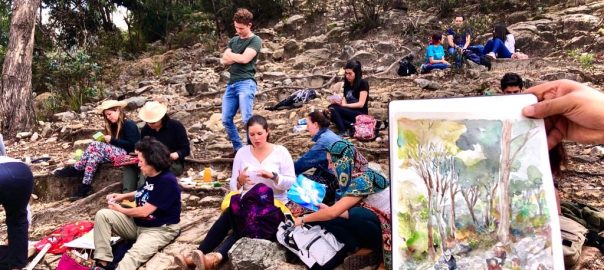Melbourne has long been at the forefront of sustainable stormwater management through WSUD. WSUD, in formal definition, is “the design of subdivisions, buildings and landscapes that enhances opportunities for at source conservation of water, rainfall detention and use, infiltration, and interception of pollutants in surface runoff from the block”.
Recent changes to the Victorian Planning Provisions will ensure that Victoria continues to have beautiful green spaces for all to enjoy by enshrining in the planning scheme the need to manage stormwater sustainably including the provision of cooling, local habitat and amenity. Big-pipe solutions alone for stormwater drainage won’t meet the planning requirements anymore. Water Sensitive Urban Design (WSUD) has become mainstream!

Integrated water management is one way of increasing a city’s resilience to the effects of climate change and ensuring the ongoing survival of green spaces. Victoria has taken the bold step of enshrining integrated water management into its Victorian Planning Provisions for almost (some exclusions apply) all forms of urban development. Amendment VC154—Stormwater management was gazetted in October 2018. Two new clauses were added to the Victorian Planning Provisions, 19.03-3S and 53.18, and existing clauses changed to support them. The overall objective of the amendment was to manage stormwater “in an integrated way to mitigate the impacts of stormwater runoff on the environment, property and public safety, and to provide cooling, local habitat and amenity benefits”.
This is the first time that issues of thermal cooling, habitat diversity and amenity have been addressed in stormwater management. The objective of the new clause 19.03-3S is to “sustainably manage water supply, water resources, wastewater, drainage and stormwater through an integrated water management approach”. The clause specifies the strategies required to achieve integrated water management. Planning and co-ordination are critical, taking into consideration the catchment context and ensuring that land for water management is set aside at the subdivision design stage. Other strategies include the minimization of “drainage, water or wastewater infrastructure and operational costs”, “filtering of sediment and waste from stormwater prior to discharge from a site”, and the integration of water “into the landscape to facilitate cooling, local habitat improvements and provision of attractive and enjoyable spaces for the community to use”. In other words, this new planning provision is mandating WSUD in most new developments in Victoria that require a planning permit. How wonderful is that!
Other clauses of the Victorian Planning Provisions have also been changed to support integrated water management in Victoria. A Planning Advisory Note (No. 75:) provides useful background to Amendment VC154 leading to these changes. It describes Clause 19.03-3S as a policy change that embeds integrated water management objectives and strategies in urban land-use planning. Clause 19.03-3S is accompanied by new clause 53.18, and changes to existing clause 56.
New clause 53.18 Stormwater management in urban development specifies the exclusions, related predominantly to lower density, rural and conservation land. The wording of the objective for the clause is quite clear in its intent: To ensure that stormwater in urban development, including retention and reuse, is managed to mitigate the impacts of stormwater on the environment, property and public safety, and to provide cooling, local habitat and amenity benefits. A clear win for nature in the city.

Melbourne has long been at the forefront of sustainable stormwater management through WSUD. WSUD is an Australian term, “something of a catch-all term for environmentally sustainable water resource management in urban areas” (here, p. 1). It has been formally defined as “the design of subdivisions, buildings and landscapes that enhances opportunities for at source conservation of water, rainfall detention and use, infiltration, and interception of pollutants in surface runoff from the block” (here, p. 13). Its practice has developed progressively since the 1960s, in response to concern about the environmental impact of stormwater discharge on creeks, rivers and coastal waters, with its economic and social consequences, doubt that aging infrastructure could support further urban development, and recognition of the potential of stormwater as a resource. This action was led by the states. Western Australia introduced the first WSUD guidelines in 1994, building on a concept of water sensitive residential design proposed by David Hedgecock and Mike Mouritz. Within 5 years, best management practice environmental guidelines for stormwater management were released by Victoria and Queensland, and by the other states and territories by 2010. The reach of WSUD has now extended beyond the capital cities to outback Australia.
In 2002, the federal government, through the Urban Stormwater Initiative of the Living Cities Program, formally proposed WSUD as a strategy to achieve environmentally sustainable development, which is “to consider lifestyles, and their supporting infrastructure, that can endure indefinitely because they are neither depleting resources nor degrading environmental quality” (here, p. 1). To achieve this, WSUD integrates best management practices (BMPs), e.g. rainwater tanks, roof gardens, swales and buffer strips, gross pollutant traps, sedimentation basins, constructed wetlands, porous paving, bioretention and infiltration devices, to collect/retain/detain, treat and/or store stormwater in the landscape. The result is multifunctional landscapes that offer visual and recreational amenity, protect the water quality of local waterways, reduce run-off and peak flows to these waterways, and minimise impervious areas and development costs of drainage infrastructure. More recently, the remit of WSUD has extended to include aquifer storage and recovery, grey water reuse, dual reticulation of treated wastewater, sewer mining, xeriscaping, water conservation and urban heat island mitigation, more closely reflecting the original concept of Hedgecock and Mouritz in Western Australia. Thus, WSUD aspires to provide multiple water sources at allotment/local, neighbourhood and regional scales, using a mix of strategies, predominantly visible structures in the landscape, often in treatment trains (a sequence of BMPs). In Australia, this is described as green infrastructure.
To support clause 53.18, clauses 52, 55, 56, 58 and 73 have been changed, involving objectives and standards. Clause 56 was a gamechanger for stormwater management in new residential estates. Five years before, Sara Lloyd had highlighted the importance of best planning practices, integrated with BMPs, to achieve sustainable stormwater management. In 2002, Melbourne 2030 Planning for Sustainable Growth was published by the Victorian government. The plan proposed Neighbourhood Principles for residential subdivision that would promote livability. In response to the principle of environmentally friendly development, which included water conservation, local management of stormwater and wastewater treatment, Clause 56 was added to the Victorian Planning Provisions in 2006.


Since 2006, the suburban landscape of Melbourne has changed as residential development has included constructed wetlands to harvest and treat stormwater onsite, often with bioretention swales along roads and other WSUD devices. These met the relevant BMPs relating to retention of suspended solids, total phosphorus, nitrogen and litter. Amendment VC-154 expands the requirements of Clause 56 so that WSUD will provide urban cooling, habitat for local wildlife, and landscape amenity. We can expect more changes in Victorian urban landscapes, as WSUD greens our cities.
Meredith Dobbie
Victoria







Leave a Reply